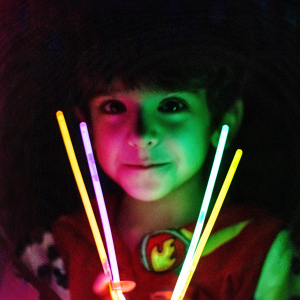Fireworks come in all shapes and sizes. Children are naturally drawn to the fun effects that fireworks create. However, it is important for families to understand the dangers of fireworks and how to prevent firework-related injuries.
Understand the Risks of Fireworks
More than 70 percent of firework injuries occur in the month surrounding the Fourth of July holiday. The most common types of fireworks causing injury are firecrackers, sparklers, and rockets.
Of the 600 individuals injured by sparklers in 2022, more than 80 percent of them were younger than 15 years old, with one in three children younger than five. According to the United States Consumer Product Safety Commission (CPSC), approximately 10,200 firework-related injuries were treated in emergency departments in 2022, with 11 deaths.
Less common but more severe, are injuries that include third-degree burns, permanent scarring, hearing and vision loss, amputations, and internal organ injury.
“Hands and fingers, head — including the face and ears — legs and eyes are the most frequently injured body parts,” said Lauren Carr, MD, an attending physician in St. Christopher’s Emergency Department. “Burns are the most common injury, with lacerations, cuts, and bruises also occurring.”
Consider These Fun Alternatives

This summer, consider fun alternatives to fireworks and celebrate special occasions without risking injury, including:
- Glow sticks
- Confetti poppers
- Bubble wands
- Noisemakers
- Outdoor projector lights
- Drone light show
Firework Safety Tips
Professional or Community Firework Shows
These are the best and safest ways to celebrate. The American Academy of Pediatrics (AAP) recommends viewing them at least 500 feet from the launch site to avoid injuries and protect your child’s hearing.
Avoid Personal Fireworks
Do not purchase fireworks for home use. Approximately 43 percent of consumer fireworks were found to be noncompliant with safety regulations in 2022. The safest way to enjoy fireworks is to attend public displays organized by trained professionals.
If you do find yourself near personal fireworks, remember:
- Many firework injuries happen when a parent or adult is present. Therefore, supervision alone is not enough to prevent serious injuries.
- Do not allow children to handle fireworks. Even unexploded fireworks or “duds” can cause injury.
- Prevent bystander injuries. Ensure that children are kept at a safe distance away from fireworks displays, even if they are not actively participating.
- Keep water nearby, such as a garden hose or bucket in case of fire or malfunction.
- Encourage children to wear shoes at all times to avoid burns and injuries to the feet.
Beware of Sparklers
While sparklers may seem harmless, they can cause burns - including third-degree burns - eye injuries, and ignite clothing. “To put it in perspective, boiling water at 140 degrees Fahrenheit can cause a serious burn in three seconds; most home conventional ovens max out at 550 degrees Fahrenheit; sparklers can reach temperatures of 1,800 - 3,000 degrees Fahrenheit,” said Dr. Carr. Children, especially those under five, often lack the coordination to handle sparklers safely.
Education
Educate yourself and your children about the dangers of fireworks and the importance of staying away from them. Even if you prohibit your children from using fireworks, they can still become injured when they are in close proximity to people who use them. Talk to your pediatrician if you have questions.
